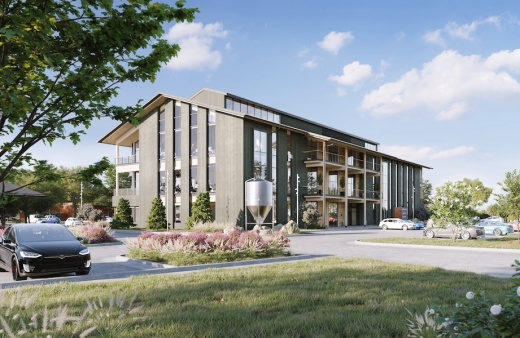Village Green at Bridgeland Central will be a 23-acre project featuring a 100,000-square-foot H-E-B and a 49,000-square-foot mass timber office building inspired by modern agrarian architecture. Both elements of the development are slated to open in 2024 near the Grand Parkway. Other plans for Village Green include restaurants, retailers and service providers.
At build-out, Bridgeland Central will offer office, retail, multifamily housing, dining, hospitality, entertainment and public spaces.
“Bridgeland Central’s scale, design and the breadth of offerings will be unlike anything that exists in Northwest Houston,” said Jim Carman, president of the Houston Region for The Howard Hughes Corp., in a statement. “Howard Hughes strives to create unparalleled experiences within its master-planned communities, and Bridgeland Central will be no exception, meeting the demand for our hallmark quality of life as the community continues to grow.”
The H-E-B at the intersection of Bridgeland Creek Parkway and Summit Point Crossing is the grocer’s first location in the Bridgeland master-planned community.
“Our Houston Region remains a priority for H-E-B, and we continue to make significant investments expanding our footprint to serve all of our neighbors,” said Armando Perez, H-E-B Houston’s executive vice president, in the release. “We are excited to bring a store to the Bridgeland community to meet the needs of this growing area.”
According to the news release, the mass timber office building will also be a first for the Greater Houston region and reflects The Howard Hughes Corp.’s dedication to sustainable development practices.
Officials said materials such as mass timber and low-carbon concrete reduce greenhouse gas emissions by about 20% compared to what a typical steel and concrete facility would produce. Additionally, the project should reduce annual energy usage by 25% and municipal water consumption by 98% with the help of a rainwater harvesting cistern.
“Prioritizing sustainability and resiliency is at the forefront of our long-term approach to developing large-scale master-planned communities where people want to live for generations,” Carman said. “This first-of-its-kind project in the region exemplifies our commitment throughout Bridgeland to exploring cutting-edge sustainability within office design.”





